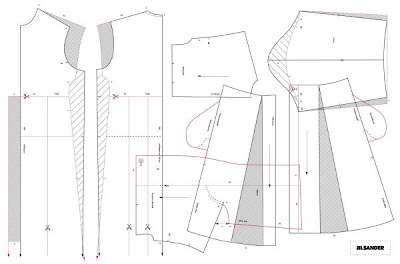Tuesday, May 22, 2012
Wednesday, May 16, 2012
Mario Testino
Mario Testino was born in Lima (Peru) in a family from Irish, spanishand italian descendants. At the beginning of the 80s he moved to London where he started to work as a photographer. Before this he had studied 3 University degrees, Economy, International Relations and Law.
His photography is characterized by elegance and erotism. As part os his portfolio is the Pirelli calendar from which I have showed some pictures in this blog before. Also he has shot many icons such as Madonna, Gwyneth Paltrow, Gisele Bündchen, Liz Hurley, Catherine Zeta Jones, John Galliano.
In 1997 he took portraits of Lady D, 5 months before she died for a Vanity Fair story. The pictures filled with glamour went around the world and through this he established himself as a world known photographer. In the following is a little collection of some of my favorite pictures from him:
His photography is characterized by elegance and erotism. As part os his portfolio is the Pirelli calendar from which I have showed some pictures in this blog before. Also he has shot many icons such as Madonna, Gwyneth Paltrow, Gisele Bündchen, Liz Hurley, Catherine Zeta Jones, John Galliano.
In 1997 he took portraits of Lady D, 5 months before she died for a Vanity Fair story. The pictures filled with glamour went around the world and through this he established himself as a world known photographer. In the following is a little collection of some of my favorite pictures from him:
Tuesday, May 8, 2012
The Reflex System
The Reflex System
What you see through the view finder is what the sensor is going to register. These cameras allow you to use different lenses without a problem and work through a 45 degrees mirror a pentaprism a and a viewfinder.
The Mirror
The mirror is situated to 45 degrees and is just in front of the shutter. It reflects the diverts the ray of light to the pentaprism a so you can see the scene through the viewfinder. When you take a photo it moves, letting the light pass by to the sensor. It goes back to its natural position when the shutter is closed.
The Pentaprisma
It is a system of mirrors in the shape of a prism which is situated in the top of the camera. It inverts the image and proects it throughout the view finder.
The view finder
It is in the back side of the camera and looking through it you can visualize the scene that will be captured.
Parts of the camera
Body
Lens
Sensor
It is the the light sensitive material which is used to capture the image. In analog cameras it would be the film and here it is the same but in digital.
Card holder:
It substitutes the place for the film and is normal placed on the side of the camera.
Battery holder
Holds one or more batteries.
Lens
You can use a great variety of lenses with reflex cameras.
Shutter
It is a mechanism that allows the passage of light or the blocking of it over the sensor
Types of digital Cameras
Digital Cameras
Types:
- Compact
- Digital Reflex o D-SLR
- Medium Digital Format
- Large Format
- Others
Compact Cameras:
Are small cameras that have a reduced size. The lens can't be changed and the screen of the camera can change depending on the model.
Digital Reflex
Digital single lens reflex system. What you see throughout the screen is exactly what you see at the end image. These are more complex cameras and more versatile than the compact. Here it is possible to change the lens and interact with various accessories.
Medium Format
These are cameras with a reflex system which are bigger and heavier. ITs sensor or digital back up is larger than from a conventional Reflex camera and may or may not be integrated in the camera. The cost of these cameras is also higher than the previously mentioned. They are sued professionally in fashion, studio and landscape.
Large Format
Very big and voluminous cameras. They are very flexible in their use and allow an selective focus. They use digital back ups to capture the image and are used in professional disciplines like studio, architecture or landscapes.
Other Digital Cameras:
There are many different kind of specific cameras for different uses like panoramic or sub aquatics.
What is photography?
Photography means painting with light and comes from the greek
photos = light, graphic = painting.
So how does one paint with the light?
The ray of light enter a dark chamber and the image projects two times inverted on the photo sensitive material which captures the image. This process does not change from analog to digital photography, its the same just the photosensitive material is changing from film to a digital backup.
photos = light, graphic = painting.
So how does one paint with the light?
The ray of light enter a dark chamber and the image projects two times inverted on the photo sensitive material which captures the image. This process does not change from analog to digital photography, its the same just the photosensitive material is changing from film to a digital backup.
Here is one of the first photos ever taken! Of course at that time the cameras where still al lot bigger than what we use today and it took a long time to capture an image, which made it difficult to capture moving things.
Friday, May 4, 2012
Subscribe to:
Posts (Atom)
































































































































